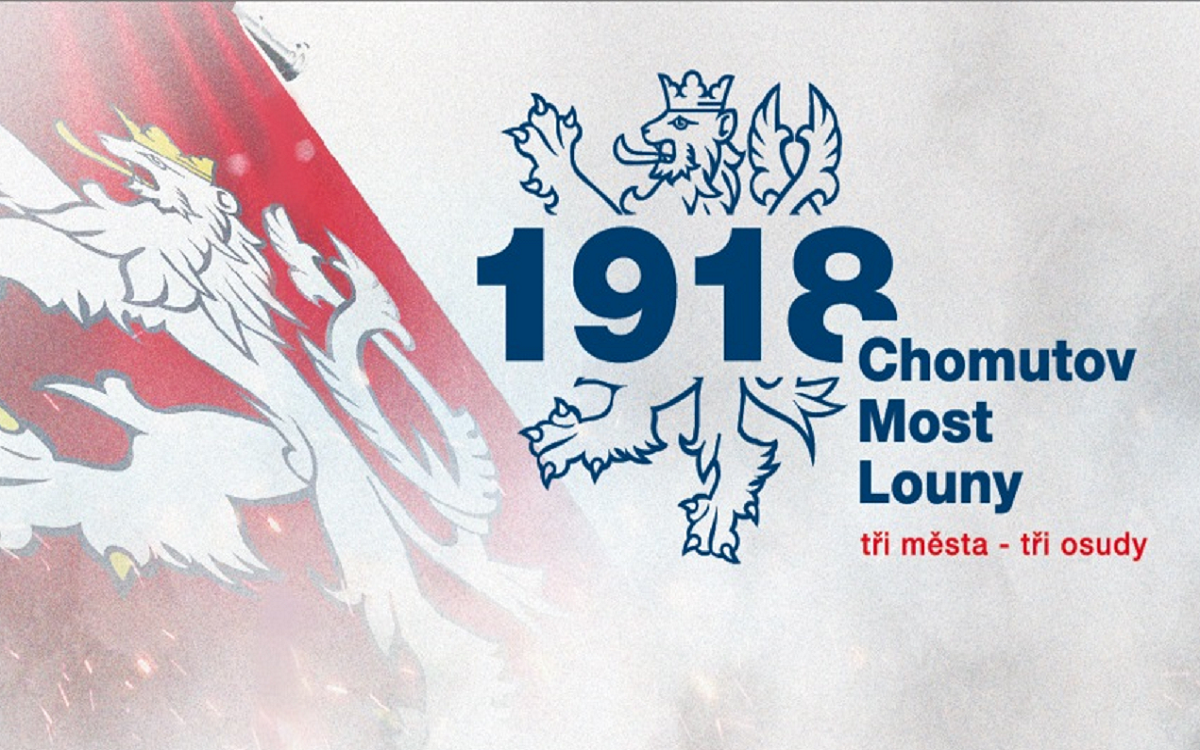Mostecko 1918; The Birth of Czechoslovakia - Exhibition
› Detail › Mostecko 1918; The Birth of Czechoslovakia - Exhibition18.10.2018 - 31.3.2019
Exhibition “Mostecko 1918; The Birth of Czechoslovakia and the Province of Deutschböhmen”, which will take place as part of the Project„1918 Chomutov – Most – Louny; three cities - three fates” under the patronage of the Ústí Region. It connects three regional museums in Chomutov, Most, and Louny within the framework of the centenary of the founding of the Czechoslovak Republic.
Project “1918 Chomutov – Most – Louny; three cities - three fates” under the patronage of the Ústí Region connects three regional museums in Chomutov, Most, and Louny within the framework of the centenary of the founding of the Czechoslovak Republic. It aims to commemorate this event as part of its exhibition activities. The year 1918 in the Ústí Region was specific due to its course, influenced by the numerous German population living here at that time. The project thus shows the October events of 1918 in various contrasts, whether it was Czech Louny, German Chomutov, or the ethnically mixed Most.
The exhibitions also reflect the phenomenon of the province of Deutschböhmen, the attempt by the Czech-German political representation to remain part of post-war Austria, and the subsequent reaction of the young Czechoslovakia. The main element connecting the joint efforts of all three museums is the activity and fate of Czechoslovak legionnaires, natives from the Chomutov, Most, and Louny regions. The Military Historical Institute in Prague and the Masaryk Archive and the Archive of the Academy of Sciences of the Czech Republic in Prague also collaborated on the joint project of the regional museums in Chomutov, Most, and Louny.
The exhibition “Mostecko 1918; The Birth of Czechoslovakia and the Province of Deutschböhmen” reflects the significant anniversary of one hundred years since the end of World War I and the founding of the Czechoslovak Republic. It aims to familiarize the public with the little-known circumstances of the events from October to December 1918 in the Most region, with a slight overlap into the rest of the Ústí Region. The exhibition will also broadly introduce the public to the phenomenon of the province of Deutschböhmen.
The introduction of the exhibition is dedicated to the coexistence of Czechs and Germans in the Most region since the mid-19th century. It focuses on the significant industrial rise of the region, associated with the arrival of a large Czech-speaking minority. It introduces visitors to the social and political life of both Czech and German-speaking populations of the Most region.
The next part of the exhibition focuses on the Most region during World War I, primarily on the economic and social situation of the civilian population, complicated by the militarization of local industry and brown coal mining. The exhibition shows not only the hardships of the local population but also of war refugees, war prisoners placed here, and war invalids.
The following part of the exhibition is focused on the end of World War I and the collapse of the Austro-Hungarian monarchy, the emergence of new national and political entities in reflection of the Versailles, Saint-Germain, and Trianon treaties, and the right to self-determination of nations according to President W. Wilson. It will show the contradictions between the statehood aspirations of the Czech and Slovak populations in contrast to the German, Polish, and Hungarian language minorities.
The main part of the exhibition is dedicated to the founding of Czechoslovakia in contrast to the political representation of Czech Germans, culminating in the northern and northwestern Bohemia with the establishment of the province of Deutschböhmen (German Bohemia) as an autonomous part of the newly formed republic of Deutschösterreich (Republic of German Austria). It will show the complex negotiations between the Czech side on one hand and the Austrian and Czech-German political representation on the other, regarding the delineation of the borders of the newly formed Czechoslovakia. The central point of this part of the exhibition will be the dramatic moments from mid-November 1918 to early January 1919 in the Most region.
The conclusion of the exhibition is dedicated to the subsequent events in March 1919 in northwestern Bohemia and will also focus on the further coexistence of Czech and German populations in the Most region until 1938.
The exhibition will last from October 19, 2018, to March 31, 2019 at the Regional Museum in Most, a contributory organization, Československé armády 1360, Most
 en
en cs
cs de
de

